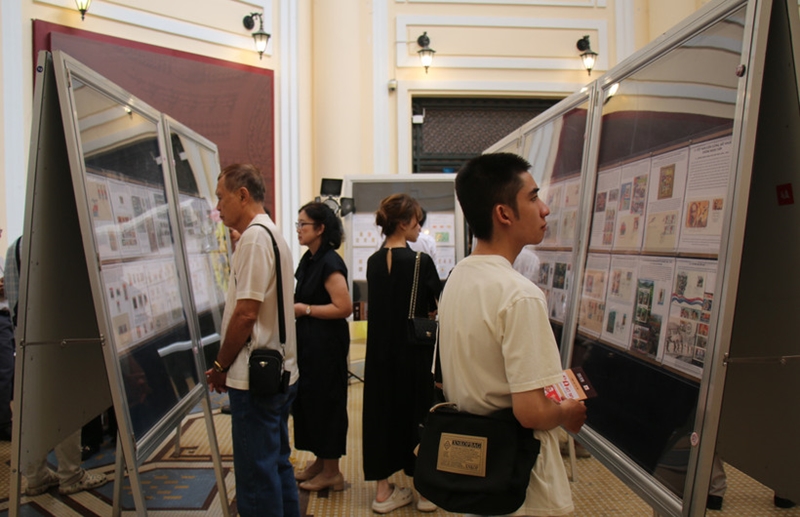The exhibition, which runs until September 27, aims to highlight and honor the documentary and artistic value of postage stamps as a medium for preserving history and reflecting Vietnam’s culture, politics, and major events, particularly the August Revolution of 1945, the National Day, and the early years of the Democratic Republic of Vietnam.
    |
 |
|
Delegates look at stamp collections at the exhibition. |
Three main topics featured are: “Vietnam on World Stamps” and “The World Tells Vietnam’s Story through Stamps”; “The August Revolution of 1945 and National Day September 2 on Postage Stamps”; and a collection of orders, medals, and badges from the early period of the Democratic Republic of Vietnam.
Speaking at the opening ceremony, Director of the Ho Chi Minh City Museum of History Hoang Anh Tuan said postage stamps are not only a means of postal payment but also a unique art form that embodies layers of information about history, culture, nature, and people. Each stamp serves as a “miniature name card” that carries a powerful influence in promoting a nation’s image to the world, he said.
According to Tuan, with its long history and rich cultural identity, Vietnam has frequently appeared on stamps issued by other countries. Images of the country, its people, landscapes, historic events, and notable figures have been chosen for stamps, reflecting international interest, respect, and close ties between Vietnam and the global community.
He emphasized that the exhibition helps the public gain a deeper understanding of stamps as cultural ambassadors.
As traditional mail is increasingly being replaced by modern communication methods, stamps harken back to past times, and serve to highlight Vietnam's friendship with other countries.
Source: VNA